- Home
- Splitting Firewood
- Seasoned Vs Unseasoned Firewood
Seasoned Vs Unseasoned Firewood
This post may contain affiliate links so I earn a commission.
What's the difference between seasoned vs unseasoned firewood?
If you burn firewood in a wood stove or you simply want to enjoy a relaxing campfire, the answer to this question is very important.
Sitting around a wood-burning fire has always been appealing.
The sparkling warmth, flickering flames, and radiant bed of charcoal combine to form a unique experience.
However, this experience can quickly become nasty under the wrong conditions.
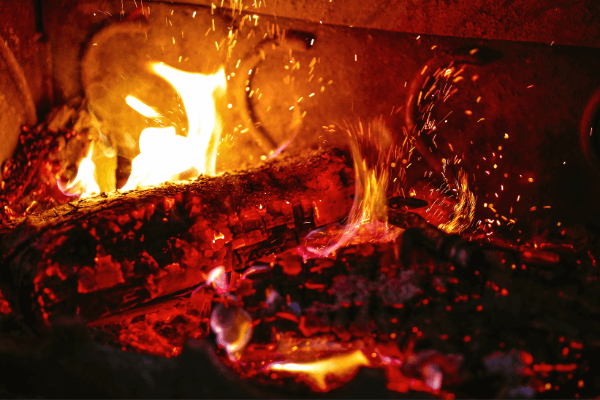
Specifically, using unseasoned wood instead of seasoned wood can ruin a good fire.
In simple terms, seasoned firewood means dry firewood.
Freshly cut firewood contains quite a bit of water.
About half of its weight can be attached to water content.
This kind of firewood is regarded as unseasoned, and burning it could be challenging, mostly because wet wood does not burn well and produces a lot of smoke.
Since seasoned firewood requires more effort and time to prepare, suppliers usually sell them at a considerably higher cost than unseasoned firewood, but the extra charge is worth it.
The Problem With Burning Unseasoned Firewood
The first challenge that you will face when burning unseasoned firewood is the difficulty in lighting a fire.
Moisture in the wood will make it hard to catch on fire.
Even if the firewood catches fire, you will require to keep constant watchfulness to ensure it does not go out.
Adding new unseasoned logs can put out all the effort you put into starting it.
Seasoned firewood does not cause any of these issues, resulting in a stress-free, gratifying fire.
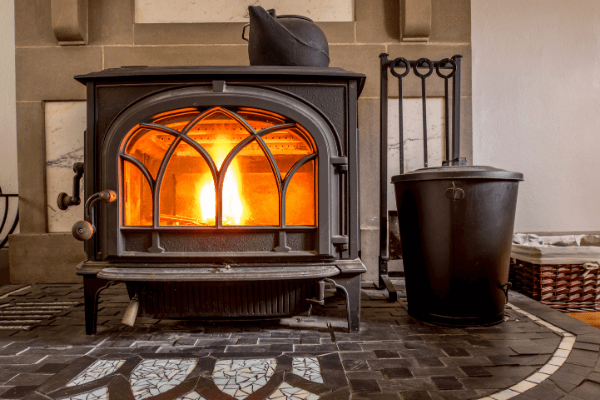
Second, burning unseasoned firewood produces a lot of smoke.
The moisture in the firewood must evaporate as fire burns through it.
Therefore, the smoke is filled with a dense vapor cloud that irritates your breathing system when inhaled.
The smoke has a lot of creosote — a black carcinogen that is produced when firewood undergoes incomplete combustion.
If creosote accumulates in your chimney, it can cause limited airflow, damage the chimney lining, or cause chimney fires.
Seasoned wood, on the other hand, produces almost no visible smoke and less creosote.
Lastly, unseasoned wood does not produce as much heat as seasoned wood.
If you rely on fire to heat your house, burning unseasoned firewood can make your nights chilly.
Unseasoned firewood burns at cooler temperatures as much heat is lost on evaporating water.
Seasoned wood contains little or no moisture to waste the heat produced by a fire, so it produces a lot of heat.
How To Identify Seasoned vs Unseasoned Firewood
Identifying seasoned vs unseasoned firewood can be difficult at times.
To speed up the seasoning process a lot of people look for dead standing trees to process into firewood.
Dead standing trees often have a reduced moisture content because the natural moisture produced by the tree does not exist.
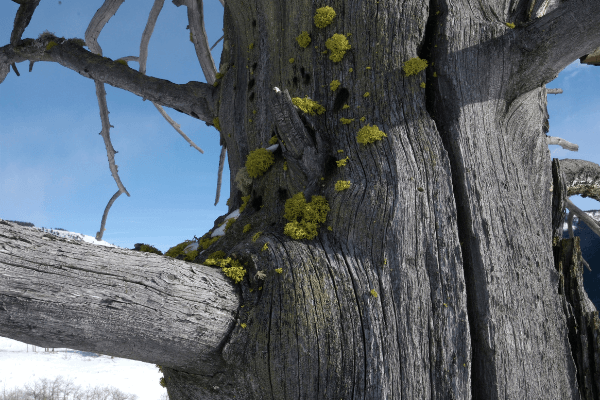
However, just because the tree appears dead it doesn't necessarily mean it's ready for immediate use.
Plus, these dead or decaying trees are often very dangerous to cut.
Their branches are sometimes brittle, and the trees can be unpredictable.
A visitor to our website had this seasoned vs unseasoned firewood question regarding some dead or dying cherry trees on their property:
"We live in the woods and have many trees that appear to be nearly dead, or dying. I've been taking some of them down.
Should I allow a partially alive tree to season for a year, or can it still be used this winter?
In particular there are a lot of overgrown cherry trees that show only partial growth on them, and others that are still standing and no growth."
Although each tree is different, as a general rule, a dead standing tree that has been dead for several years will have some wood that's ready for immediate use or within a few months of processing it.
A good dead standing tree will have the bark peeling off and will be noticeably dead.
When you cut down a dead standing tree, be careful because the tops are often weak and the branches can break off and fall in any direction, making it really dangerous at times.
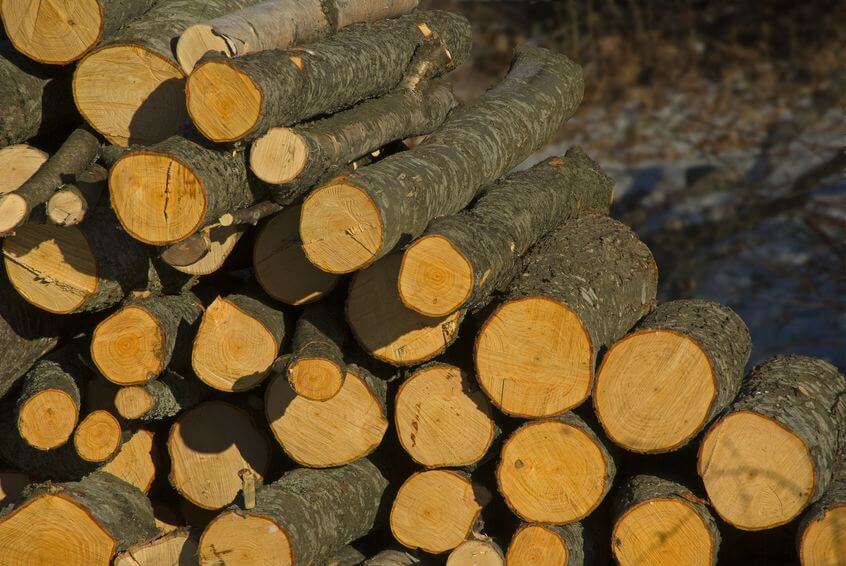 Freshly Cut Green Cherry Firewood
Freshly Cut Green Cherry FirewoodOnce you successfully fell a dead standing tree, generally the top portion of the tree will be the driest.
I usually find the bottom 6-8 feet of the trunk is the wettest and will need a while to dry out before it's ready to burn.
This moisture is usually not from the tree, but the trunk soaks up moisture from the ground which leaves it too wet to burn immediately.
The cherry trees on your property that still have some green shoots on them will probably need roughly 6 months to 1 year to season depending on how alive they really are.
Since each tree is different it's pretty tough to tell just how dry the wood is until you cut it up.
Softer woods, like spruce and pine, can season in as little as six months.
On the other hand, hardwoods, like oak, can take up to two years to completely season.
Firewood seasons quicker in the summer when you have the heat of the sun and the warm winds to help dry out the wood.
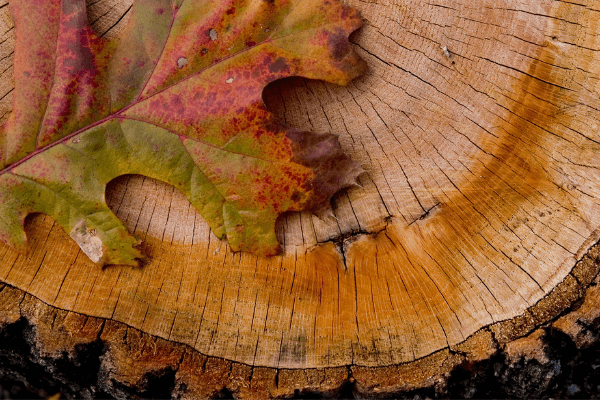
If you cut down a cherry tree with green growth in the fall, especially a wet cool Michigan fall, it's not going to be ready to burn until next season.
As with any firewood type, splitting the wood will allow it to dry faster.
By looking at the firewood, if you don't see any cracks forming on the ends of the wood, it means it probably needs a little longer to season before use.
Seasoned firewood is usually faded gray in color.
Sometimes cherry can retain its moisture for quite a while.
I've had 8-foot bolts of cherry sitting in a pile for months only to find they're still really wet towards the middle when I cut them up.
Seasoned Vs Unseasoned Firewood
Sometimes seasoned vs unseasoned firewood can be difficult to identify.
The exterior of the wood may appear dry but the wood is actually still wet.
If you ever have any concerns about the moisture content of your firewood you can always invest $25-$50 in a firewood moisture meter.
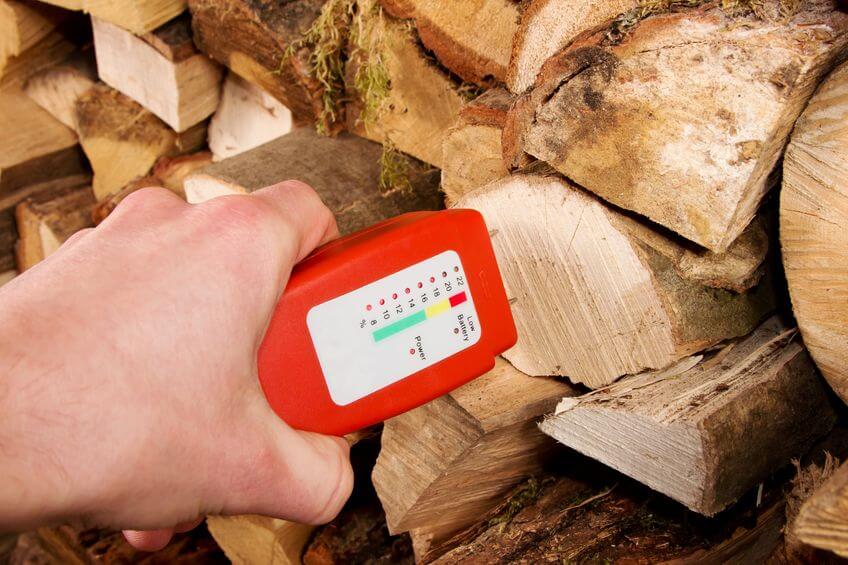
This handy tool will tell you the moisture content of the firewood so you know when it's safe to burn, helping you identify seasoned vs unseasoned firewood.
For accuracy, test many pieces of firewood from different positions in the woodpile.
If the content of moisture is less than 20%, your firewood will burn efficiently and cleanly.
Quick lighting, continued burning, less smoke, and more heat are the primary benefits of burning seasoned vs unseasoned firewood.
Using unseasoned wood will waste your time, cost you more in fuel, and damage your health.
Make seasoned wood the obvious choice to heat your home.

About the Author
Obsessed with firewood, Nick is behind over 350+ of Firewood For Life's articles, as well as countless reviews, guides and YouTube videos to help readers like you reduce heating costs and create the perfect fire.


